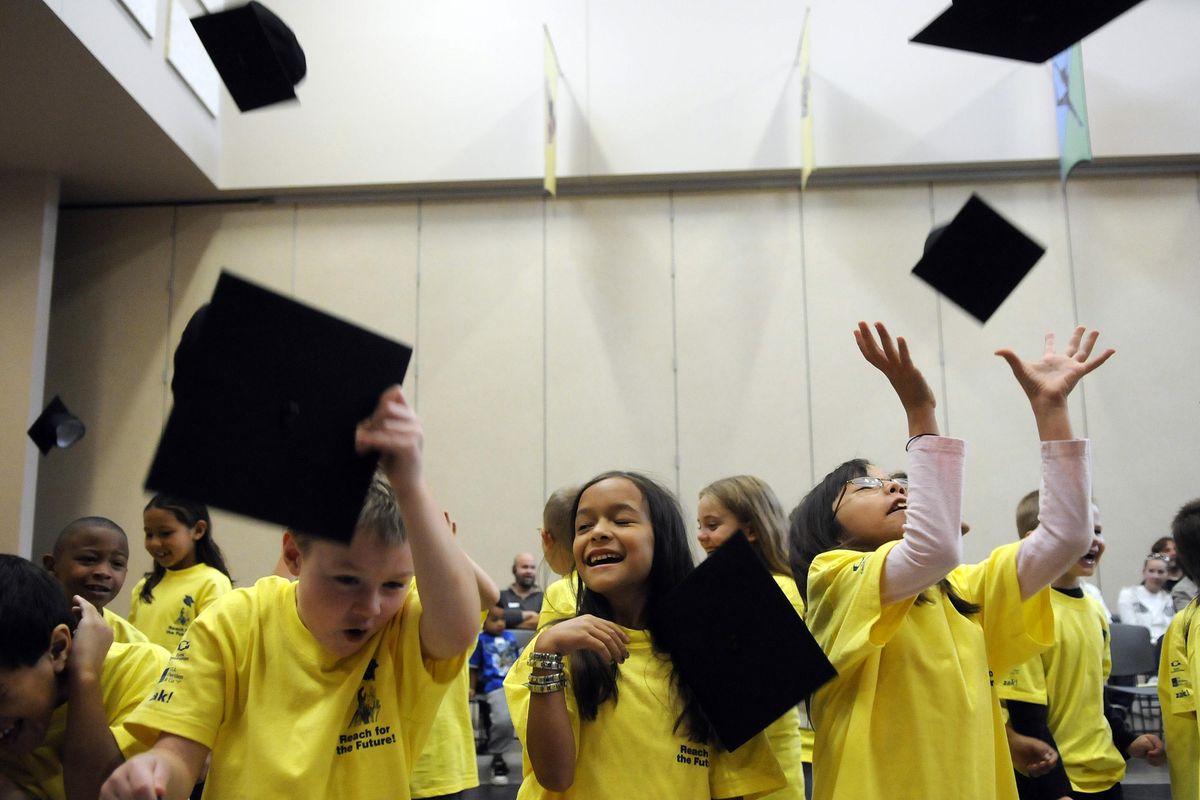Future is now for former Lidgerwood Elementary School second-graders promised scholarships in 2008

More than a decade ago, all the second-graders at Lidgerwood Elementary School in Spokane were told they would receive full-ride scholarships to public college, but being second-graders, they probably didn’t give the news much thought. Now those students are graduating from high school and preparing to go on to college thanks to Reach for the Future, a privately funded nonprofit organization.
The program was launched by friends Patsy Etter and Neice Schafer, who hired project coordinator Lauren Garske to mentor the 49 students who started with the program. Lidgerwood Elementary was chosen for the program because nearly all the students qualified for free and reduced lunch and children in low-income families typically have low college attendance rates, Garske said.
She’s lost touch with a couple of the students over the years, but the students who are left are beating the odds. “We have 46 still in the program,” she said.
That’s not to say that all 46 are still attending school in Spokane. They’ve scattered across the country, but the offer of free college (up to the cost of attending Washington State University) still stands.
“We have students in seven different states and 14 different school districts,” she said. “As long as they stay in contact and stay on track educationally, they still qualify.”
There’s no GPA requirement. Students simply have to finish high school by graduating or earning a GED. Of those still in the program, four will not graduate in June, though two of the four are expected to graduate in August.
Along the way the program was funded by donations from more than 500 individuals, 24 local businesses, annual fundraisers and United Way donations. There were also grants and contributions from foundations. More than $2 million has been raised since 2005.
The students didn’t just get a promise of free tuition. There was an after-school program that continues to this day. It started at the Boys and Girls Club where the kids did science projects, performed community service and had other enrichment activities. During middle school the after-school program moved to Garry Middle School, where the focus shifted.
“It turned into a tutoring program,” she said. “It’s evolved, obviously, from the Boys and Girls Club.”
There were also lunch buddies visiting students regularly. Garske would meet as many students who moved away as she could, once a month, to keep in touch. And it all paid off.
“They beat the odds,” she said. “They are extremely resilient. I’m just extremely proud of these kids.”
Khrystell Henning admits that she likely wouldn’t have earned her GED and be making plans for college this fall without Garkse and the Reach for the Future program. “When I was at Lewis and Clark I was behind on credits,” she said. “I had attendance issues.”
Garske sat her down for a heart-to-heart talk and convinced her to apply herself to her education. “Lauren has been with me since childhood,” Henning said. “She’s like a second mother. She helped me emotionally and helped me get out of a rut.”
She plans to attend Spokane Community College in the fall and get an associate degree in business, then switch to a four-year college for a bachelor’s degree in communication.
Matthew Shields, who is attending On Track Academy, also credits the Reach for the Future program for saving him academically.
“I had a really bad home life,” he said. “I bounced home to home a lot. My home life was really unstable. School was my outlet.”
Even as he moved from school to school and district to district, Garske stuck with him. And though school was his outlet, he didn’t do well in a traditional school setting.
“I don’t think I would have made it out of middle school, to be honest, without the Reach program and the tutors. Consistency was what I learned from the Reach program and that really helped.”
In his freshman year in high school he took an AP photography class and discovered he had a knack for graphic design. In his sophomore year, he discovered music and began making his own. He created a group called Glass Park.
“We’re a collective,” he said. “I make hip-hop music.”
But Shields has his sights set on more than making music. He wants to be a music manager. He already handles the social media for Glass Park and books its gigs and is looking forward to an upcoming mentorship program.
He plans to attend Spokane Falls Community College in the fall and earn a degree in graphic design. “I’m just getting the degree under my belt because I want a degree,” he said.
Like many of his classmates, Shields didn’t realize the impact of the scholarship when he was younger. But when he got to high school and realized other students didn’t have the option he had, it sunk in. “That made me really respect what we got as a gift,” he said.
Both students said they consider Garske to be a second mother to them and the feeling is mutual. The program will continue through their first two years of college, but Garske has no plans to stop reaching out to her kids after the program ends.
“They’re not getting rid of me,” she said. “I’m going to show up at their college graduations and their weddings and their retirements, if I’m still around.”
Though the program is approaching its end with these students, Garske said there are no plans to adopt a second group of children. “We’d love for this program to continue, but obviously these kids are our priority,” she said. “They’ll probably need us now more than ever.”